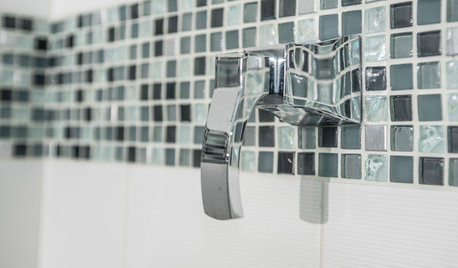Need to know quick! Sanded vs unsanded grout - what to use?
elizpiz
15 years ago
Featured Answer
Sort by:Oldest
Comments (16)
remodelfla
15 years agoccoombs1
15 years agoRelated Professionals
Carson Kitchen & Bathroom Designers · Fresno Kitchen & Bathroom Designers · La Verne Kitchen & Bathroom Designers · Lafayette Kitchen & Bathroom Designers · Southampton Kitchen & Bathroom Designers · Chicago Ridge Kitchen & Bathroom Remodelers · League City Kitchen & Bathroom Remodelers · Niles Kitchen & Bathroom Remodelers · Toms River Kitchen & Bathroom Remodelers · Waukegan Kitchen & Bathroom Remodelers · Weymouth Kitchen & Bathroom Remodelers · Tacoma Cabinets & Cabinetry · Brookline Tile and Stone Contractors · Mililani Town Design-Build Firms · Woodland Design-Build Firmselizpiz
15 years agogshop
15 years agoheimert
15 years agoredroze
15 years agoci_lantro
15 years agoelizpiz
15 years agoredroze
15 years agoredroze
15 years agokdonald
14 years agoTileExcellence
10 years agokbsl
9 years agolast modified: 9 years agorishrad
8 years agoAndrea W
6 years ago
Related Stories

BATHROOM TILEQuick Fix: Repair Cracked Bathroom Grout
Banish an eyesore and safeguard your bathroom from water damage in 30 minutes or less with this DIY repair
Full Story
BATHROOM DESIGNConvert Your Tub Space Into a Shower — the Tiling and Grouting Phase
Step 3 in swapping your tub for a sleek new shower: Pick the right tile and test it out, then choose your grout color and type
Full Story
TILE3 Key Steps for Grouting That Looks Its Best
Get your grout right to keep your tile beautiful and for an installation that will last
Full Story
TILEEpoxy vs. Cement Grout — What's the Difference?
Grout is grout, right? Nope. Cement and epoxy versions have different appearances, durability and rules of installation
Full Story
HOUSEKEEPINGHow to Clean Grout — Stains and All
If your grout is grossing you out, this deep-cleaning method will help it look new again
Full Story
PAINTINGWhat to Know About Milk Paint and Chalk Paint — and How to Use Them
Learn the pros, cons, cost and more for these two easy-to-use paints that are great for giving furniture a vintage look
Full Story
DECORATING GUIDESWhat You Need to Know Before Painting Brick
Sure, painted brick can be a great look. But you need to take some risks into account. Here's how to paint brick like a pro
Full Story
FLOORSKnow Your Flooring: Concrete
Concrete floors have a raw and elegant beauty that can be surprisingly warm
Full Story
REMODELING GUIDES6 Must-Know Lessons From a Serial Renovator
Get your remodel right the first time, with this insight from an architect who's been there too many times to count
Full Story
KITCHEN DESIGNThe Future of Backsplashes
Grout is out. Continuous sheets of glass, stone, metal and porcelain are saving cleaning time and offering more looks than ever
Full Story









bill_vincent